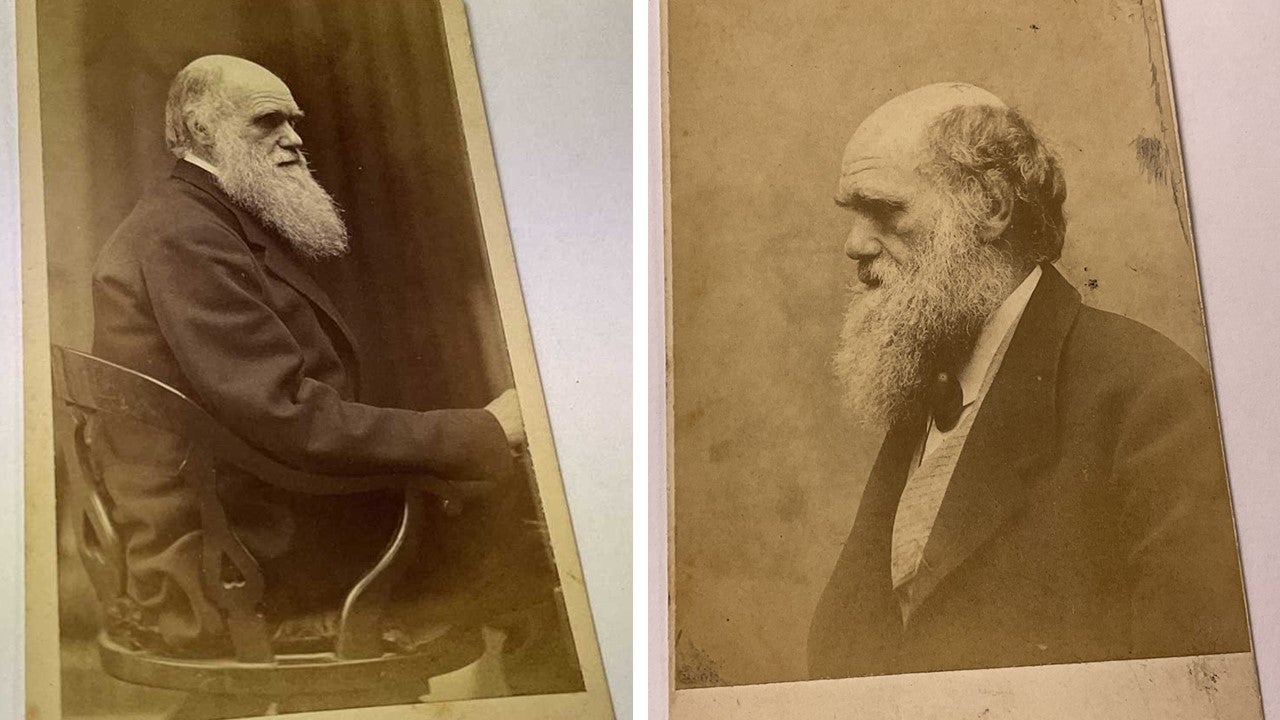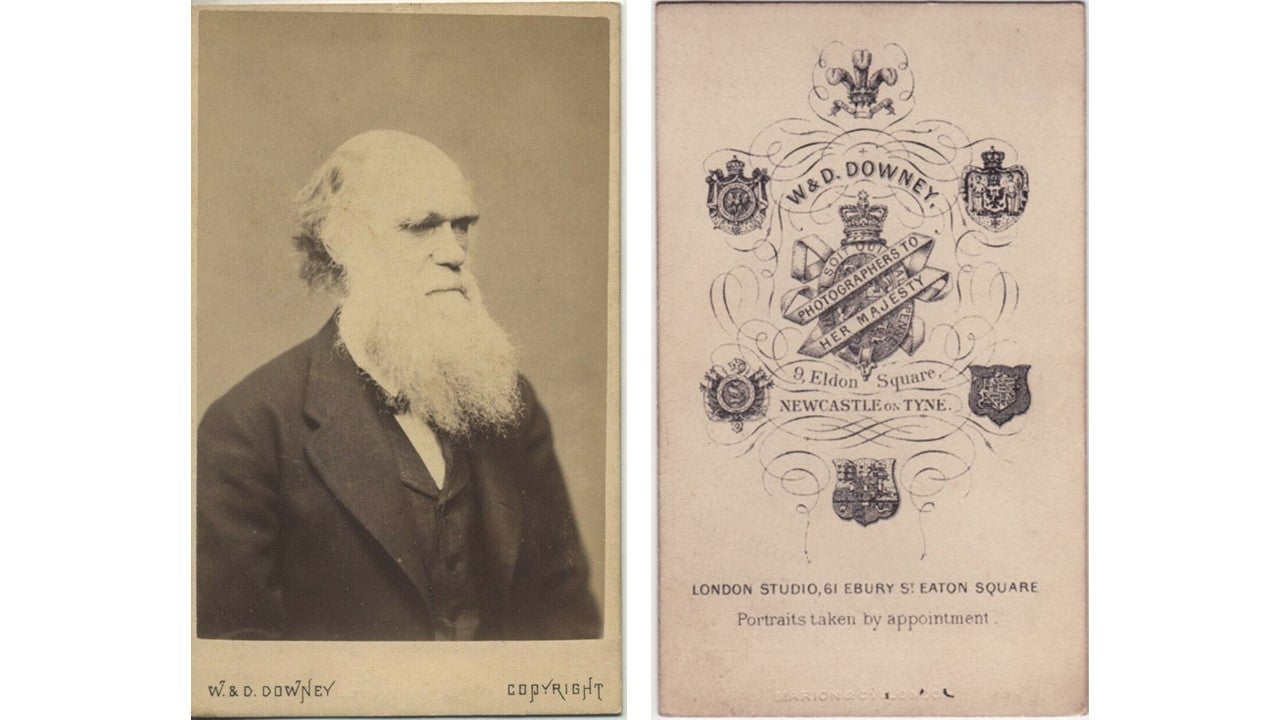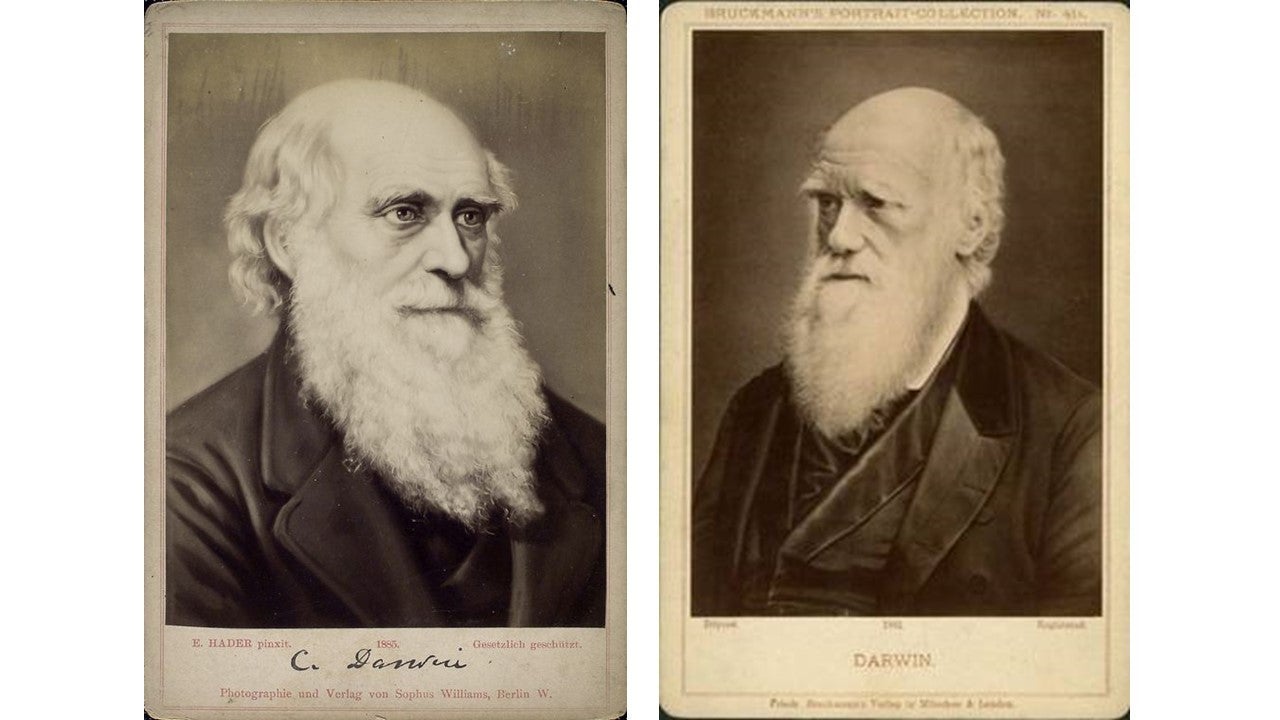The complete photos of Darwin unveiled
March 27, 2023
Some of the rarely seen photos of Darwin launched on “The Complete Photographs of Darwin”. Left: A photo taken during a sitting in 1871 by Swedish-born photographer Oscar Gustav Rejlander. It was part of a series of four photos – two of which are famous and have been widely reproduced. This photo was discovered in 2022. Right: This photo has not been published before. The photographer and year the photo was taken is unknown, however the date range has been narrowed to 1866-1871.
Charles Darwin is one of the most iconic men of science of all time. For 150 years, his image as a bearded sage has been familiar to the public. Collectors today pay tens of thousands of dollars for a photograph signed by Darwin, or an original print of a famous portrait.
Despite Darwin’s fame, accessibility to his photographic portraits and their historical backgrounds has been difficult. An online image search of Darwin would typically show the same eight or so photographs while most of the other photographs of Darwin are almost completely unknown. For a long time, the largest collections online could be found through the United Kingdom’s National Portrait Gallery and Wikipedia’s “Portraits of Charles Darwin” which have 18 different photos of him. Additionally, in the many publications on Darwin, the identity of photographers and dates of the photos have been a chaos of confusion and errors.
This has now changed with the launch of a comprehensive photo catalogue of Darwin. The catalogue The Complete Photographs of Darwin, rolled out on Darwin Online on Darwin Day (12 February) this year, is the result of many years of research by historian of science Dr John van Wyhe from the NUS Department of Biological Sciences and Tembusu College, and the Director of Darwin Online. The research involved combing through thousands of publications, archives, libraries, auction records, exhibitions, online sales, Darwin family and other private collections, and research into 19th-century photography and publishing.

This photo of Darwin is commonly attributed to the photographer, W.D. Downey, mentioned on these cards. However, the photo is actually one of three taken by George Charles Wallich in 1871. Downey had mass produced photographs such as these, and the originals by Wallich have almost never been seen.
The catalogue reveals there were at least 53 different photographs of Darwin, including nine discovered during Dr van Wyhe’s research, and describes them in unprecedented historical detail. In a world’s first, the catalogue also details all the printed versions of each photograph which total more than 300 different types. With illustrations included, the online catalogue contains more than 470 images. Some of these may have been produced by the thousands which is how Darwin came to be the familiar face of evolution so well known today.

Fake photos were produced of Darwin including (left) a photo of a painting from 1881, and (right) an image based on Darwin’s head from photo in 1878 but with the body and clothes drawn by an artist and sold as pirated copies.
The 17,000-word catalogue is a quantum leap beyond what was known before. It is the most comprehensive catalogue of photographs of any historical man of science, not to mention it being of Charles Darwin who revolutionised the understanding of life on Earth with his theory of evolution by natural selection.
Original article from NUS News


